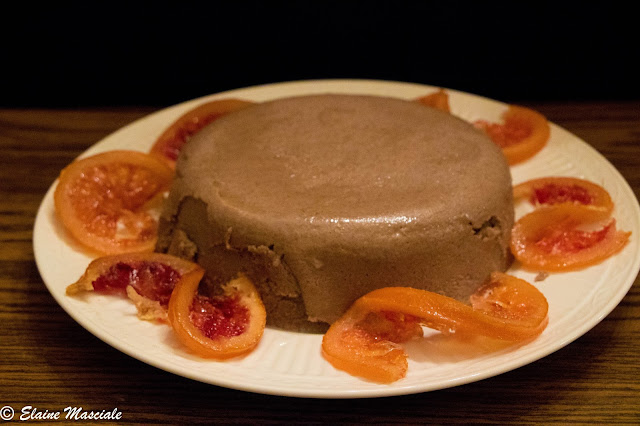Irish Stew
Irish Stew for Saint Patrick's Day
Saint Patrick's Day is approaching rapidly, along with all the foods we consider to be "traditional" for the day. I thought it would be interesting to do some research into period (antebellum) foods and recipes for the day.
 |
| Lyrics to "St Patrick Was a Gentleman" The Every-Day and Table Book, Wm. Hone, 1835 |
The Recipe
This recipe for Irish stew comes from Charles Francatelli, chef to Queen Victoria for four years. One of his four published cookbooks is geared towards the working class. He discusses ways to make frugal ways more filling (usually by adding oatmeal or bread to broth) and to help them extend to feed enough people.
To my delight, he included a recipe for Irish stew.
Preparation and Thoughts Thereon
Let me confess upfront - this stew was a shock to my system. I kept wanting to ADD THINGS - ALL THE THINGS! Where was the seasoning other than salt and pepper? Couldn't I add a bay leaf - please? What about the carrots? I resolved that I would try the stew as he intended, not as I expected or wanted.
Meat Mr. Francatelli specified inferior cuts of meat - any kind. As much as I wanted lamb, it was more expensive than beef, so beef it was. I chose a bone-in chuck because the price per usable meat made it the most economical This was almost 3 lb of meat.
Mr. Francatelli specified inferior cuts of meat - any kind. As much as I wanted lamb, it was more expensive than beef, so beef it was. I chose a bone-in chuck because the price per usable meat made it the most economical This was almost 3 lb of meat.Onions and Potatoes
 I chose small onions that were on sale. Because I had almost 3 lb of meat, I used 18 small yellow onions. My potatoes were Yukon golds, which were a variety unknown at the time. However, in the spirit of economical stew, the potatoes were what I had on hand and they were getting old... somewhat tired and wrinkly. They needed to be used up and stew is a great way to use older potatoes.
I chose small onions that were on sale. Because I had almost 3 lb of meat, I used 18 small yellow onions. My potatoes were Yukon golds, which were a variety unknown at the time. However, in the spirit of economical stew, the potatoes were what I had on hand and they were getting old... somewhat tired and wrinkly. They needed to be used up and stew is a great way to use older potatoes. Making the Stew
After patting the meat dry for better browning, I cut it into pieces as close to egg-sized as I could get. Many of the pieces were dictated by the veining of the meat itself. I put salt and freshly ground black pepper into a large bowl and rubbed it into each cut piece. Not using flour on the meat was a struggle, but I had resolved to stay true to Mr. Francatelli's recipe. I have never rubbed this much salt and pepper onto meat - I usually add it during cooking, so I had to just trust. I decided to insert a browning step at this point. Many cooking techniques are "understood" in the abbreviated period recipes, so I felt it was allowable. I did not add any oil for the browning process. I used a large enameled Dutch oven as my cookpot, both for size and the way it evenly retains heat during slow cooking
Thinking about the final product, I cut my peeled onions into chunks and added them to the pot. I also added the bones I had cut out since bones add a great deal of flavor to the broth. Proportionally there was a LOT of onions. Add water to cover.

I covered the pot, lowered the heat to low and let it sit. Every so often I stirred the pot, and I worried. As I tasted the broth during the cooking period, I feared it was going to be far too salty. Once again, put the lid back on and trust Mr. Francatelli.
An hour and a half later (or a bit longer), the broth was beautifully seasoned, although still salty, and the meat was soft. I added the peeled, chunked potatoes (I cut them into eighths), put the lid back on, and waited for 20 more minutes.
 |
| Finished stew |
Once the potatoes tested done, I removed the beef bones and discarded them.
Time to eat!
THOUGHTS AND EVALUATION
The stew was delicious. Each addition (onions, potatoes), made the broth less salty. I would advise a cautious hand with the salt, though. I have never used that much pepper in a stew or soup, but I found it to be delightful and a great addition. I certainly did not taste any particular heat - just a more complex flavor. Overall, the broth reminded me very strongly of French onion soup, which is logical, since onions dominate the stew.
This meal is meant to be frugal. The recipe made a very large quantity (4 quarts?) and would feed a good number of people. In that frugal mindset, you need to realize you can only have a small amount of beef per serving. The meat is more useful for flavoring and is meant to stretch over a volume of food. In this particular cookbook, Mr. Francatelli often mentions making a flavorsome nourishing broth to feed a number of people. In some cases, he thickens that broth with oatmeal, in others he advises the diners to sop up the broth with bread. I believe bread would be a way to stretch this soup to fill hungry people, but also think the number of potatoes could be increased. The recipe reads as if potatoes are meant to be the main filler.








Comments
Post a Comment